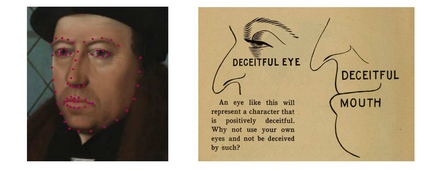Interpersonal trust - a shared display of confidence and vulnerability toward other individuals - can be seen as instrumental in the development of human societies. Safra, Chevallier, Gr\`ezes, and Baumard (2020) studied the historical progression of interpersonal trust by training a machine learning (ML) algorithm to generate trustworthiness ratings of historical portraits, based on facial features. They reported that trustworthiness ratings of portraits dated between 1500--2000CE increased with time, claiming that this evidenced a broader increase in interpersonal trust coinciding with several metrics of societal progress. We argue that these claims are confounded by several methodological and analytical issues and highlight troubling parallels between Safra et al.'s algorithm and the pseudoscience of physiognomy. We discuss the implications and potential real-world consequences of these issues in further detail.
翻译:人际信任是对其他个人的信任和脆弱性的共同表现,可以被视为对人类社会发展的推动。 Safra, Chevallier, Grezezes, 和 Baumard (2020年)通过培训机器学习算法,根据面部特征对历史肖像进行可信赖性评级,研究了人际信任的历史进展。他们报告说,1500-2000CE之间对肖像的可信任性评级随着时间而增加,声称这表明人际信任与社会进步的若干衡量标准相对应。我们争辩说,这些说法被若干方法和分析问题所混淆,并突出了Safra等人的算法与物理学伪科学之间的令人不安的相似之处。我们更详细地讨论了这些问题的影响和潜在的现实世界后果。







